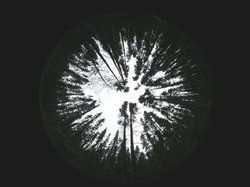|


An example of digital hemispherical
photograph (left) and a digital camera (Nikon CoolPix 4500)
with a fisheye lens
Hemispherical or fisheye photography is an indirect means
for measuring LAI as well as studying the canopy architecture
and light regime. Hemispherical photographs have the advantage
of spatial discrimination, and are particularly useful for
acquiring canopy structure and light penetration such as foliage
angular distributions, and gap fractions at different zenith
and azimuthal angles. Hemispherical photographs can capture
the light obstruction/penetration patterns in the canopy,
from which the canopy architecture and foliage area can be
quantified. Gap fraction can be calculated from the photographs
to quantify the canopy openness and architecture. By measuring
gap fractions at several zenith angles, the plant area index
and the leaf inclination angle distribution can be simultaneously
calculated (Chen et al., 1991).
A correct exposure is of crucial importance for collecting
digital hemispherical photographs to accurately retrieve effective
LAI, clumping index and the actual LAI. A methodology of digital
hemispherical photograph exposure was developed for estimation
of canopy parameters (Zhang et al., 2005). The procedure for
collection of digital hemispherical photographs is suitable
for various sky brightness and canopies with different closure
levels. Two stops of overexposure relative to the sky reference
was proven theoretically and experimentally to be the optimum
exposure for taking digital hemispherical photographs for
the purposes of obtaining the mean canopy gap fraction and
the effective LAI.
References:
Chen, J.M., Black, T.A. and Adams, R.S., 1991. Evaluation
of hemispherical photography for determining plant area index
and geometry of a forest stand. Agricultural and Forest Meteorology,
56: 129-143. Zhang, Yongqin., Jing M. Chen, John R. Miller,
2005b, Determining Digital Hemispherical Photograph Exposure
for Leaf Area Index Estimation, Agricultural and Forest Meteorology
(in review).
|